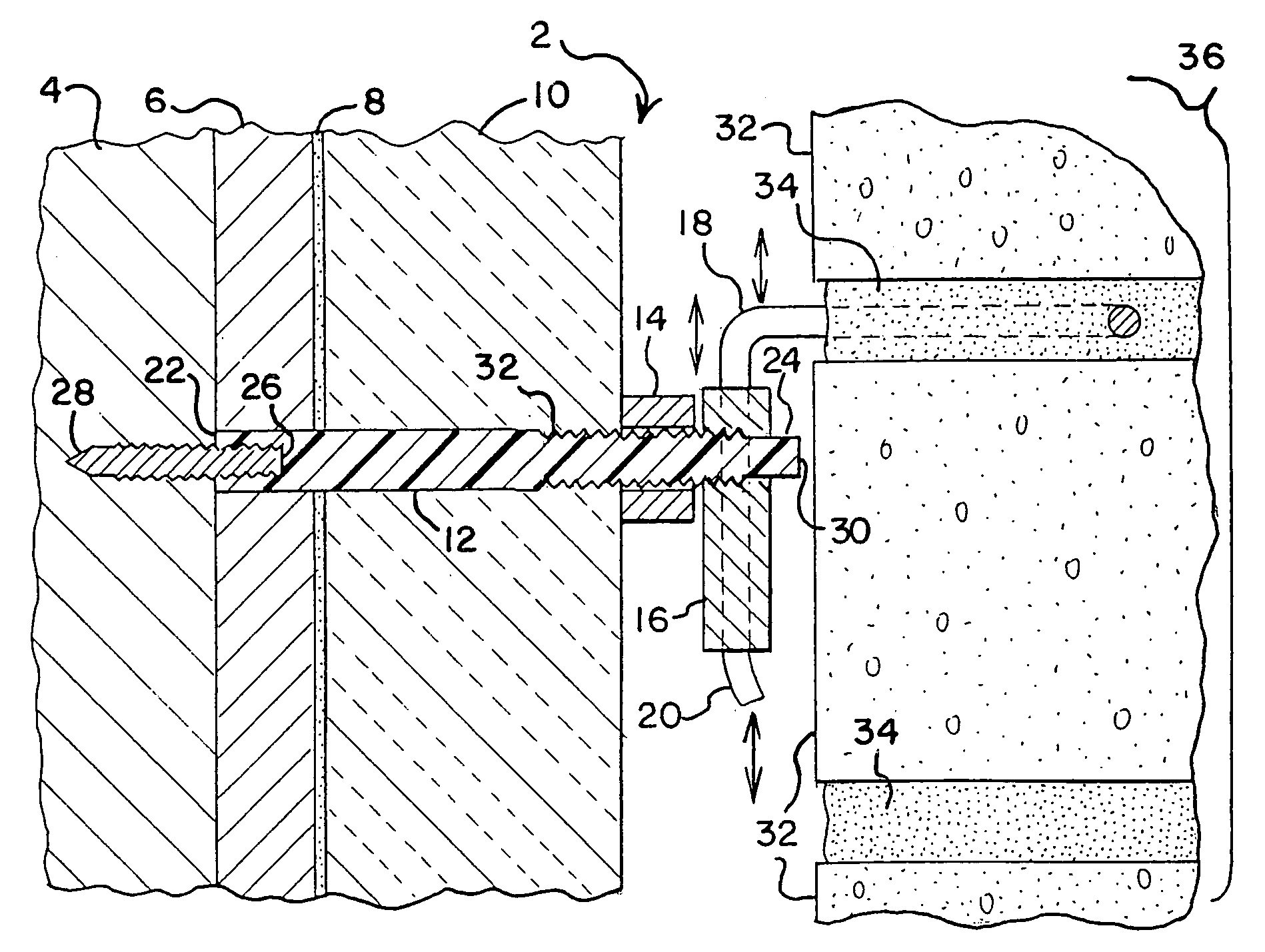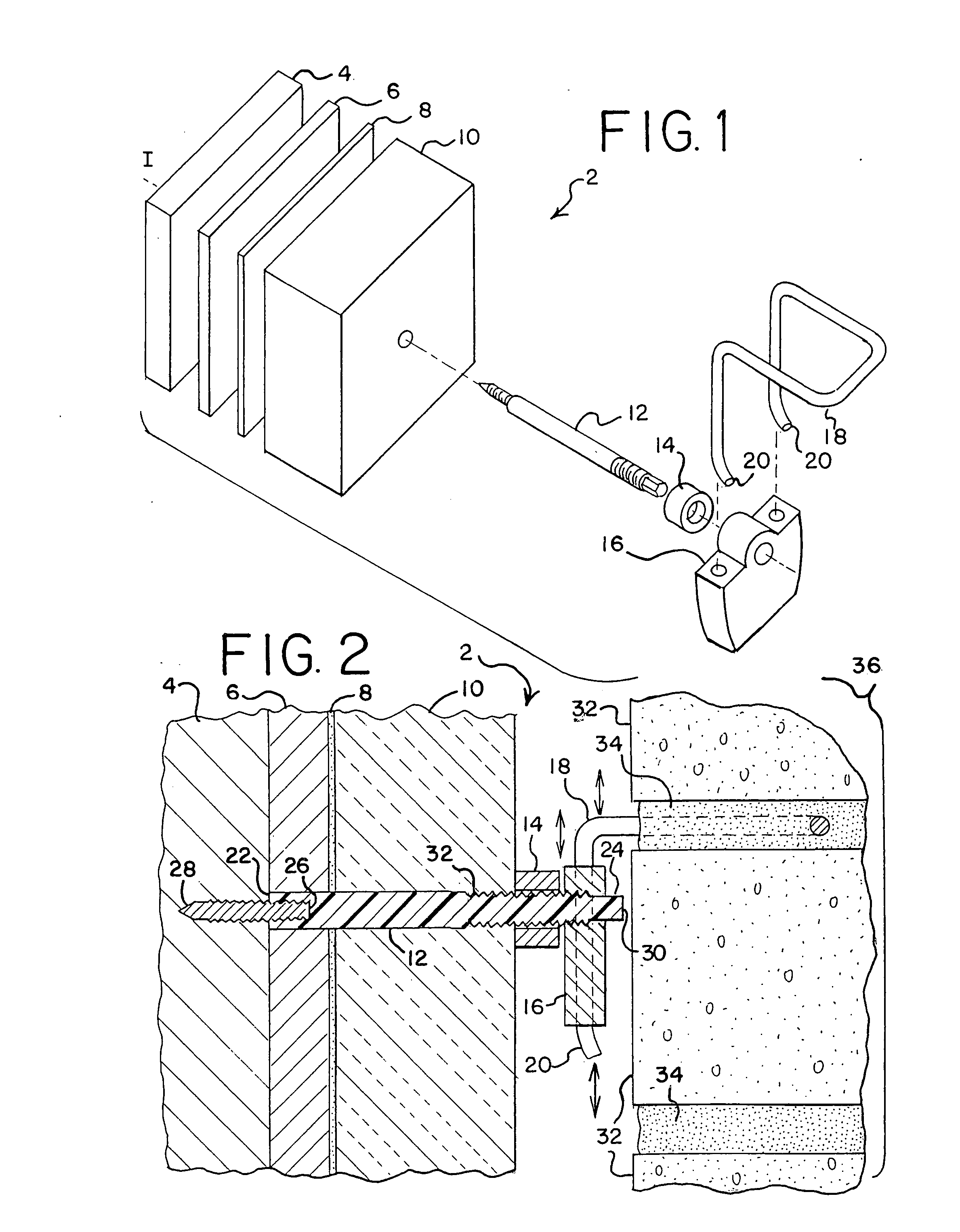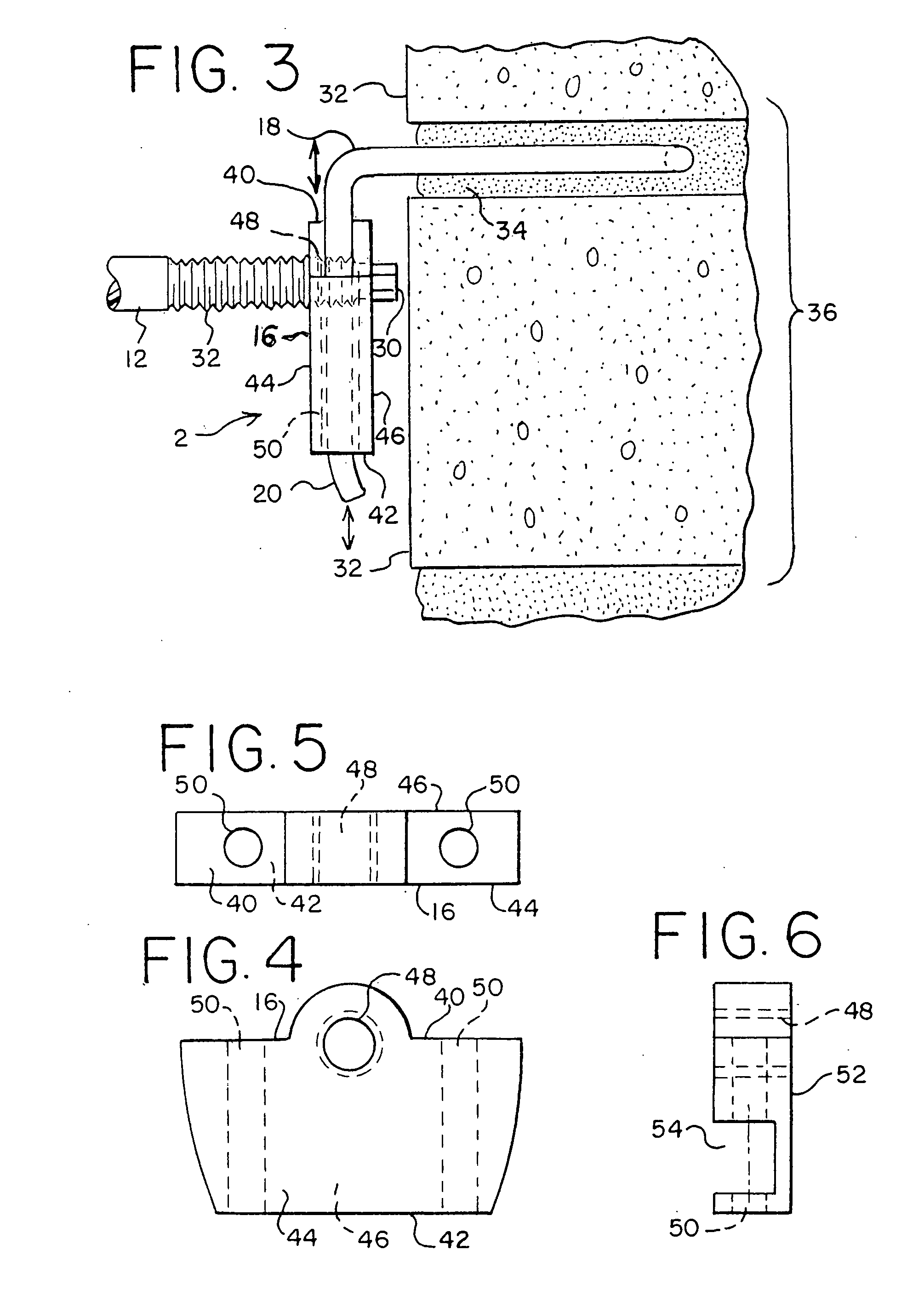Composite fastener, belly nut, tie system and/or method for reducing heat transfer through a building envelope
- Summary
- Abstract
- Description
- Claims
- Application Information
AI Technical Summary
Benefits of technology
Problems solved by technology
Method used
Image
Examples
Embodiment Construction
[0058]The present invention generally relates to a composite fastener, a belly nut, a tie system and / or a method for reducing heat transfer through a building envelope. More specifically, the present invention relates to a composite fastener, a belly nut, a tie system and / or a method that may operate to secure a wall, such as, for example, a masonry wall, through insulation to a backup structure, such as, for example, a steel stud, a wood stud, a structural steel, a concrete, a block, another wall and / or the like. The composite fastener may have a low thermal conductive value (k-value) and may have non-corrosive properties. The belly nut may be used, for example, in masonry veneer anchor and masonry cavity wall applications.
[0059]Referring now to the drawings wherein like numerals refer to like parts, FIGS. 1-3 illustrate a tie system 2 in embodiments of the present invention. The tie system 2 may have a backup structure 4, exterior sheeting 6, a barrier 8, insulation 10, a composit...
PUM
| Property | Measurement | Unit |
|---|---|---|
| Length | aaaaa | aaaaa |
| Thermal properties | aaaaa | aaaaa |
Abstract
Description
Claims
Application Information
 Login to View More
Login to View More - R&D
- Intellectual Property
- Life Sciences
- Materials
- Tech Scout
- Unparalleled Data Quality
- Higher Quality Content
- 60% Fewer Hallucinations
Browse by: Latest US Patents, China's latest patents, Technical Efficacy Thesaurus, Application Domain, Technology Topic, Popular Technical Reports.
© 2025 PatSnap. All rights reserved.Legal|Privacy policy|Modern Slavery Act Transparency Statement|Sitemap|About US| Contact US: help@patsnap.com



